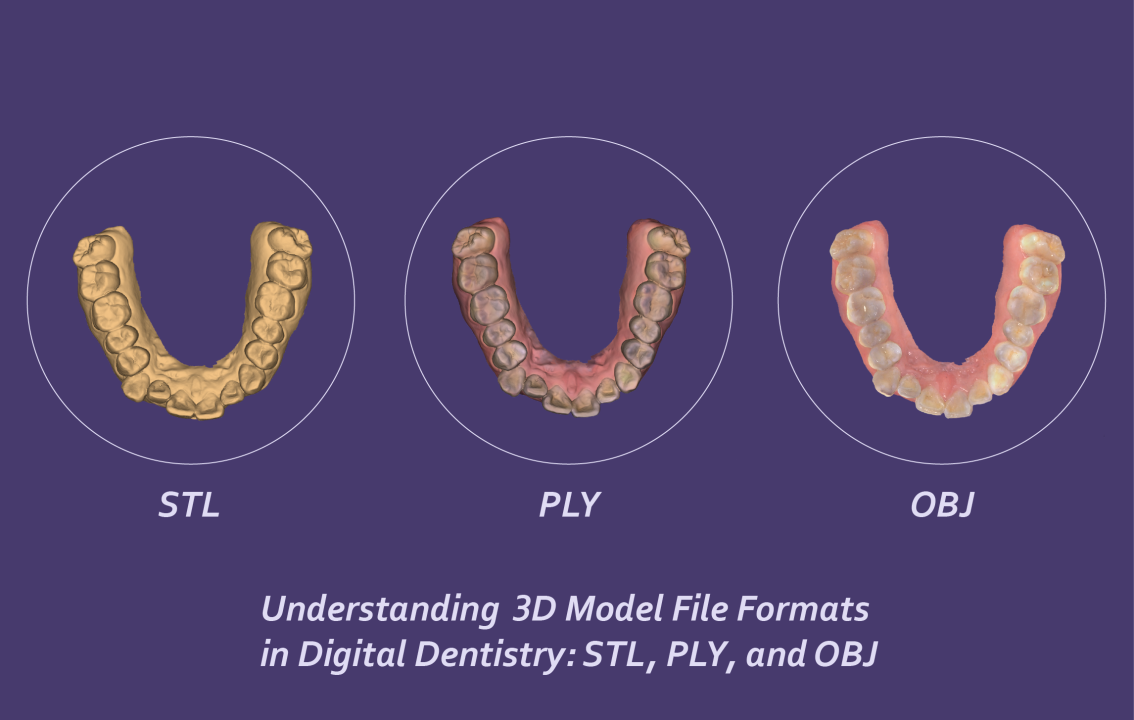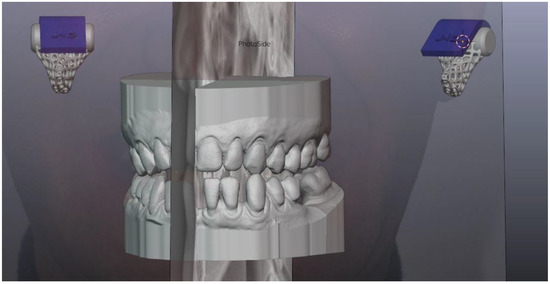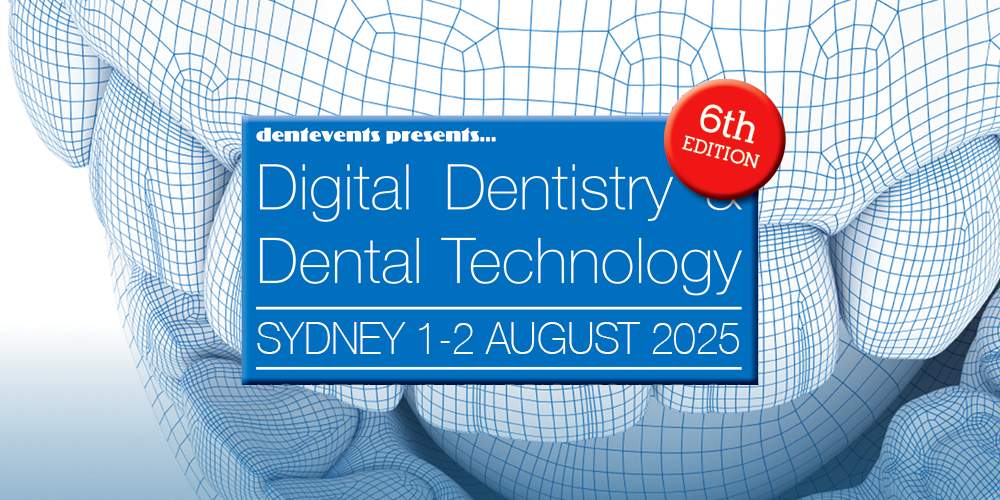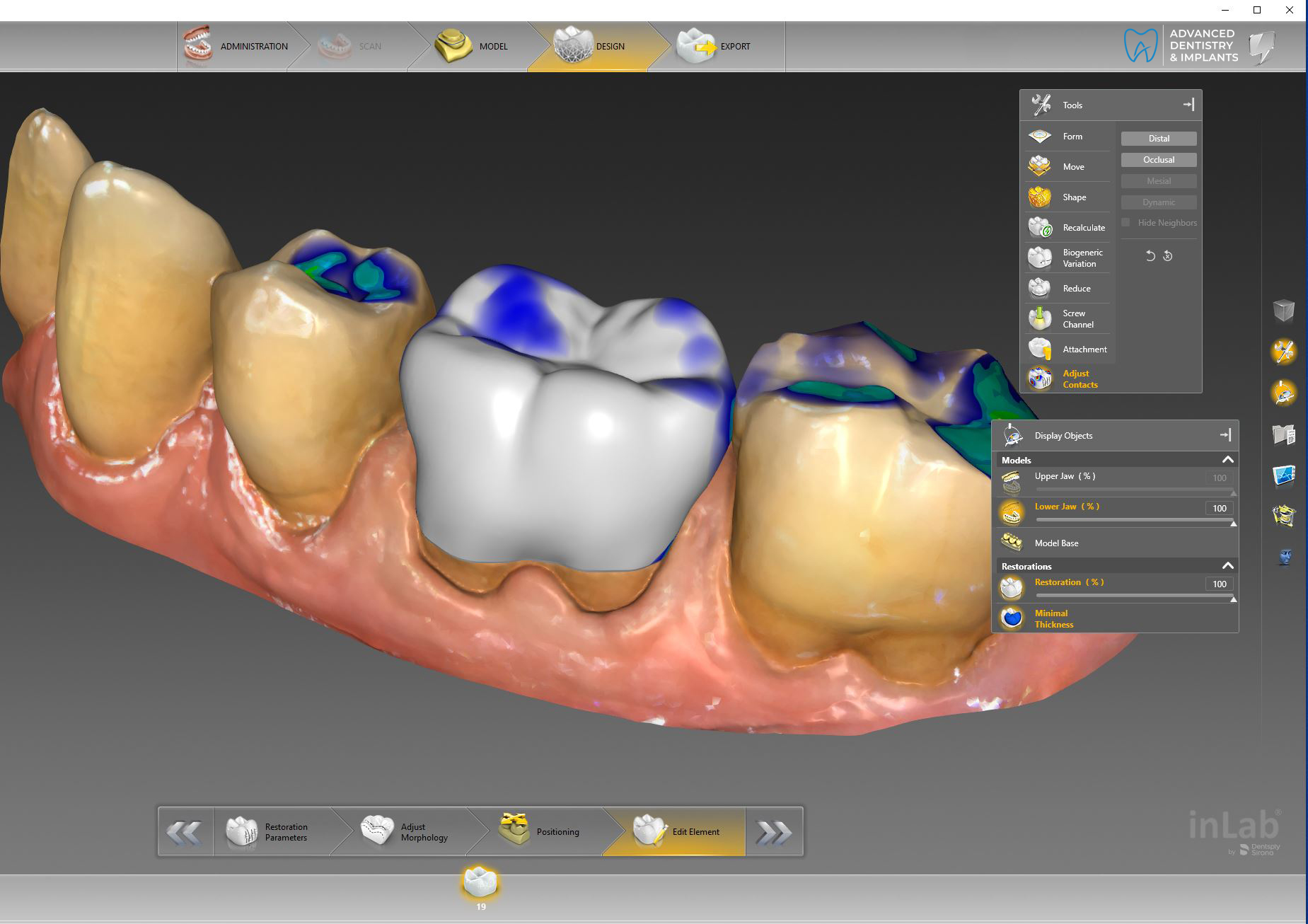File Formats in Digital Dentistry: STL, OBJ, PLY, and DICOM
When dental clinics adopt digital tools, they often run into a practical but critical issue: file formats. Every scanner, CAD system, or visualization program has its own way of saving data, and not all of them speak the same “language.” In everyday workflows, four formats come up again and again: STL, OBJ, PLY, and DICOM.
STL — the everyday standard
STL is by far the most common. It describes only geometry, which makes files compact and easy to process. Almost every scanner and milling unit supports it, so it became the default for prosthetics, aligners, and other routine tasks. The downside is clear: no colors, no textures, just surfaces. That works fine for crowns and models, but less so when soft tissue detail is needed.
OBJ — geometry plus texture
OBJ adds an extra layer by storing texture maps alongside geometry. This makes it valuable for color scans and gingiva visualization. The catch? Support is inconsistent. Some programs read OBJ fully, others drop the textures, leaving users with a plain model. Moving OBJ files between different platforms can easily lead to surprises.
PLY — flexible, but niche
PLY is widely used in research settings because it can handle not just geometry and color, but also attributes like surface normals. For dentistry, it’s handy when analyzing the precision of intraoral scans. Still, it hasn’t reached mainstream CAD/CAM systems, meaning conversion is often necessary before a PLY file can be used in production workflows.
DICOM — the medical backbone
DICOM is a different story. It comes from medical imaging and is the standard for CBCT and radiographs. Unlike mesh formats, DICOM carries metadata about the patient and imaging setup. While it’s perfect for archiving and medical compliance, it rarely feeds directly into CAD workflows. Usually, IT staff must convert DICOM slices into STL or OBJ before designers can work with them — and the quality of conversion tools varies widely.
Why compatibility matters
The biggest challenge is that no single format covers all needs. Clinics end up juggling between STL for production, OBJ or PLY for visualization, and DICOM for imaging. Conversions are common, and that creates room for errors, file corruption, or loss of detail. For administrators, keeping the workflow reliable often means combining different utilities — from lightweight viewers like CAD Assistant to preprocessing frameworks such as Open3D Dental — just to bridge the gaps.
In the end, file formats are not just a background technicality. They decide how smoothly information moves between scanners, labs, and software. As digital dentistry continues to grow, interoperability and robust conversion pipelines will remain central to everyday practice, especially for universities and clinics working with a mix of commercial and open-source tools.




